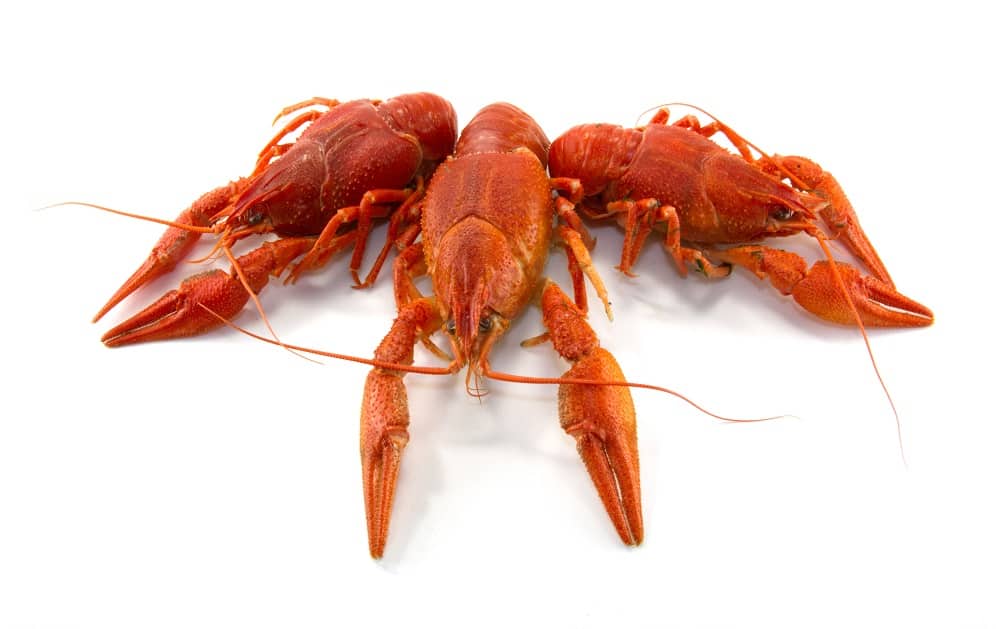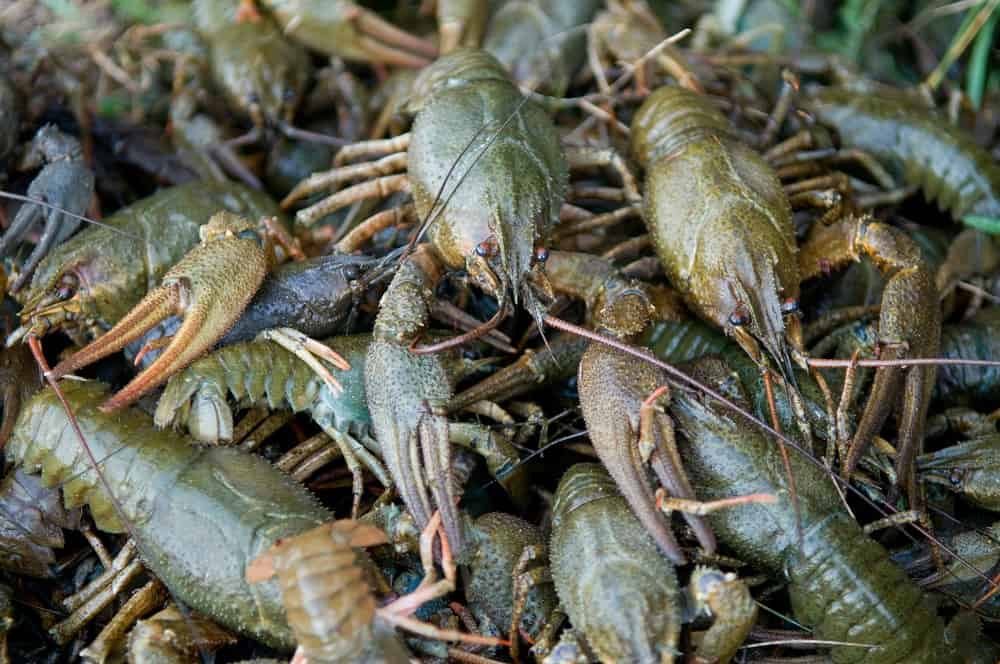On one hand, seafood intake during pregnancy is said to be important for proper fetal development. On the other hand, seafood intake also entails exposure to environmental contaminants, most important of which is methyl mercury.
Among the many species of seafood, crawfish is one that can be safely eaten by pregnant women anytime during their pregnancy, as long as it has been properly cooked. It has low mercury content but is high in EPA and DHA. According to U.S. FDA, it is one of the best choices for seafood intake during pregnancy.
Benefits of Seafood Intake
Seafood’s nutritional benefits are attributed to its high-value protein and unsaturated fatty acid content, as well as certain vitamins and minerals (Branciari et al., 2020). Seafood is considered an important source of omega-3 polyunsaturated fatty acids (PUFA), especially eicosapentaenoic acid (EPA) and docosahexaenoic acid (DHA) (Ozogul et al., 2007).
Studies have shown that intake of omega-3 PUFA is linked to maintenance of physiological functions, including optimal cardiovascular system, brain and vision functioning. Likewise, it was shown that omega-3 PUFA have positive effects on certain diseases like arthritis, hypertension, and diabetes mellitus, and are associated with prevention of some health conditions, such as coronary artery disease and cancer (Pal et al., 2018).
A large number of evidences support the recommendations to consume seafood that are high in omega-3 fatty acids one to two times per week for their benefits in cardiovascular health, such as decreased risk of cardiac death, coronary heart disease (CHD) and ischemic stroke (Rimm et al., 2018).
During pregnancy, consumption of various types of seafood has been associated with improved neurocognitive development of infants when compared to no intake of seafood. This benefit was seen in the lowest amounts of seafood consumed, at around 4 ounces per week, and continued through the highest amounts, up to 12-100 ounces per week (Hibbeln et al., 2019).
Moreover, any level of seafood intake above no or rare consumption was found to lower the prevalence of preterm births. This association was found to be stronger for lean fish compared to fatty fish (Brantsӕter et al., 2017).
What are Crawfish?

Crawfish is a small crustacean that lives in fresh water. It is also called crayfish, mudbugs, yabbies or crawdads in different regions of the United States. It looks like a small lobster, and is similar in flavor to shrimp and lobster. They can be found in rivers, lakes, and swamps all over the world.
Crawfish is usually cooked by boiling. After bringing water to a boil, the crawfish can be placed and let cooked for 15 minutes. After turning off the heat, the crawfish can be left in the water for another 15 minutes before serving. It can be eaten on its own or added to another dish.
The taste of crawfish is comparable to combined lobsters, crabs and shrimps, though less salty and sweeter. The claws, legs and tails are generally the most desirable parts to eat because they contain most of the meat.
Crawfish is classified in the category of lean fish, as it contains less than 2% fat. However, crawfish was also found to be high in cholesterol, with 95.7 mg per 100 grams (Branciari et al., 2020). Although cholesterol content in seafood depends on their diet, age, sex, spawning cycle, season, and geography, Donmez (2009) reported that freshwater fish had generally lower cholesterol content than marine fish.
The major PUFA identified in crawfish were EPA and DHA. EPA content was found to be 11.6% in crawfish. In contrast to other fish, crawfish was found to contain higher levels of EPA, exceeding that of DHA. For the omega-6 PUFA, linoleic acid (14.9%) and arachidonic acid (22.6%) were predominant in crawfish (Branciari et al., 2020).
Mercury Exposure from Seafood Intake
In spite of the widely acknowledged health benefits of seafood consumption, concerns have been brought up about the presence of dangerous contaminants, including heavy metals, methyl mercury, polychlorinated biphenyls (PCBs), dioxins and dioxin-like contaminants (DLCs), and organochlorine pesticides. However, levels of contaminants found are lower than the recommended limits. Hence, the health benefits of seafood consumption outweigh the potential risks (Branciari et al., 2020).
Mercury exists in three main forms: metallic, inorganic salts, and organic compounds. These forms are present widely in lakes, rivers and oceans. They are taken up by the water’s microorganisms and transformed into methyl mercury, undergoing biomagnification and causing significant disturbance to aquatic lives (Jaishankar et al., 2014).
The major route of human exposure to mercury is through consumption of contaminated seafood animals. Mercury is a developmental neurotoxicant. Pregnant women are exposed to mercury mainly from seafood consumption (Trasande et al., 2005).
Methyl mercury is a neurotoxin responsible for destruction of microtubules, damage to mitochondria, lipid peroxidation and accumulation of neurotoxic molecules, including serotonin, aspartate and glutamate (Patrick, 2002).
According to both Environmental Protection Agency and the National Academy of Science, it is estimated that up to 8-10% of American women have mercury levels that can lead to neurological disorders in their offspring. The brain is the target organ for mercury, but it can impair any other organ and can lead to adverse effects in the nerves, kidneys and muscles (Jaishankar et al., 2014).
Because of the variety of seafood species that are used for human consumption across Europe, the European Food Safety Authority (EFSA) advocates that each country consider its own pattern of seafood species most commonly consumed to create their own safety levels of intake, while also evaluating the health benefits of seafood consumption (Alexander et al., 2015).
Recommendations for Seafood Consumption During Pregnancy

According to the 2015-2020 Dietary Guidelines for Americans (DGA), between 8 and 12 ounces or one to two servings per week of seafood is recommended for pregnant women as a good source of protein, vitamins D and B12, and omega-3 PUFA. Included in their best choices list for seafood with low mercury content is crawfish. The mean mercury concentration in crawfish is only 0.033 parts per million as reported in the U.S. FDA website.
Seafood intake greater than the recommended amounts are generally not associated with either further benefit or harm (Rimm et al., 2018). However, raw or undercooked seafood can cause food borne infections or parasitic diseases. Hence, pregnant women should never eat raw or undercooked crawfish.
Additionally, standard food safety should be followed when cooking crawfish at home. Using separate cutting boards and utensils when preparing raw crawfish can help avoid cross-contamination. Thoroughly wash with soap and water all utensils and food preparation surfaces that come in contact with raw seafood to decrease the chance of contamination. Hand washing before and after food preparation is likewise very important.
Final Thoughts
Crawfish is a highly nutritious, low-fat, type of seafood. But while crawfish is considered a “best choice” for seafood consumption during pregnancy, pregnant women should remember to eat it only when prepared in a sanitary manner, properly cooked, and within the recommended amounts, to avoid food borne pathogens and increased exposure to mercury. Do not hesitate to talk to your doctor about any seafood concern during pregnancy.
References
- https://www.fda.gov/food/metals-and-your-food/mercury-levels-commercial-fish-and-shellfish-1990-2012
- https://www.thespruceeats.com/what-are-crawfish-4771895
- http://crazyalanswampshack.com/blog/crawfish-101-what-first-time-crawfish-eaters-should-know/
- https://www.fda.gov/food/consumers/advice-about-eating-fish
- Alexander, J., Benford, D., Chaudhry, Q., Griffin, J., Hardy, A., Jeger, M. J., …, & Silano, V. (2015). Statement on the benefits of fish/seafood consumption compared to the risks of methylmercury in fish/seafood. EFSA Journal 13(1), 3982. https://doi.org/10.2903/j.efsa.2015.3982
- Branciari, R., Franceschini, R., Roila, R., Valiani, A., Pecorelli, I., Piersanti, A., …, & Ranucci, D. (2020). Nutritional value and contaminant risk assessment of some commercially important fishes and crawfish of Lake Trasimeno, Italy. International Journal of Environmental Research and Public Health 17(7), 2545.
- Brantsӕter, A L., Englund-Ogge, L., Haugen, M., Birgisdottir, B. E., Knutsen, H. K., Sengpiel, V., …, & Meltzer, H. M. (2017). Maternal intake of seafood and supplementary long chain n-3 polyunsaturated fatty acids and preterm delivery. BMC Pregnancy and Childbirth 17, 41. doi: 10.1186/s12884-017-1225-8
- Donmez, M. (2009). Determination of fatty acid compositions and cholesterol levels of some freshwater fish living in Porsuk Dam, Turkey. Chemistry of Natural Compounds 45, 14-17. https://doi.org/10.1007/s10600-009-9219-z
- Hibbeln, J., Spiller, P., Brenna, J. T., Golding, J., Holub, B., Harris, W., …, & Carlson, S. (2019). Relationships between seafood consumption during pregnancy and childhood and neurocognitive development: Two systematic reviews. Prostaglandins, Leukotrienes & Essential Fatty Acids 151, 14-36. doi: 10.1016/j.plefa.2019.10.002
- Jaishankar, M., Tseten, T., Anbalagan, N., Mathew, B., & Beeregowda, K. (2014). Toxicity, mechanism and health effects of some heavy metals. Interdisciplinary Toxicology 7(2), 60-72. doi: 10.2478/intox-2014-0009
- Ozogul, Y., Ozogul, F., & Alagoz, S. (2007). Fatty acid profiles and fat contents of commercially important seawater and freshwater fish species of Turkey: A comparative study. Food Chemistry 103(1), 217-223. https://doi.org/10.1016/j.foodchem.2006.08.009
- Pal, J., Shukla, B. N., Maurya, A. K., Verma, H. O., Pandey, G., & Amitha (2018). A review on role of fish in human nutrition with special emphasis to essential fatty acid. International Journal of Fisheries and Aquatic Studies 6(2), 427-130. https://www.fisheriesjournal.com/archives/2018/vol6issue2/PartF/6-2-50-593.pdf
- Patrick, L. (2002). Mercury toxicity and antioxidants: Part 1: Role of glutathione and alpha-lipoic acid in the treatment of mercury toxicity. Alternative Medicine Review 7(6), 456-471. https://pubmed.ncbi.nlm.nih.gov/12495372/
- Rimm, E., Appel, L., Chiuve, S., Djousse, L., Engler, M., Kris-Etherton, P., …, & Lichtenstein, A. (2018). Seafood long-chain n-3 polyunsaturated fatty acids and cardiovascular disease. Circulation 138(1), e35-e47. doi: 10.1161/CIR.0000000000000574
- Trasande, L., Landrigan, P., & Schechter, C. (2005). Public health and economic consequences of methyl mercury toxicity to the developing brain. Environmental Health Perspectives 113(5), 590-596. doi: 10.1289/ehp.7743




